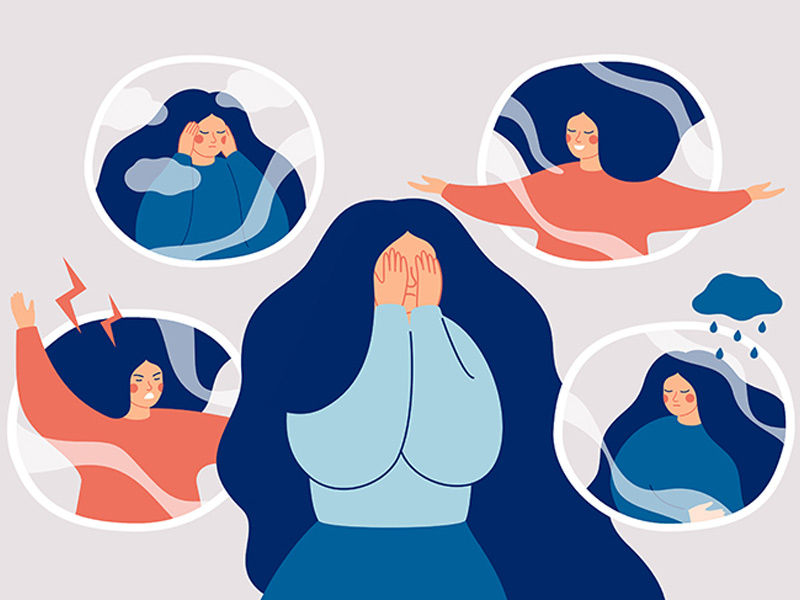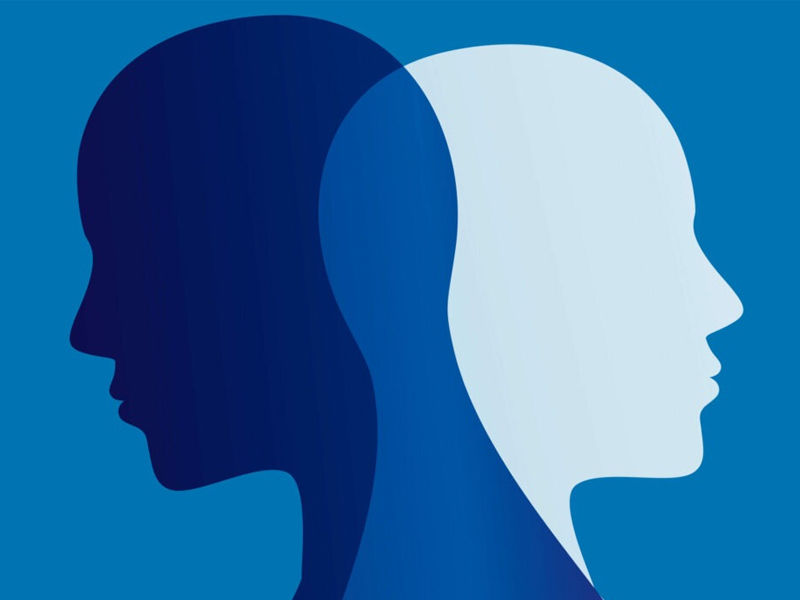Bipolar Disorder is a mental health condition that includes extreme emotional reactions, mood swings, and unexpected reactions to normal things. Bipolar Disorder is also known as manic depression. Mood Swings are one of the most common indicators of Bipolar Disorder.
While mood swings are a very common phenomenon, things start getting serious after a mood swing shifts to hypomania. When depression leads to losing interest in all things, and the feeling of hopelessness and sadness empowers everything, it indicates bipolar disorder. A bipolar disorder may range from a depressive low to a manic high.
While the exact cause of bipolar disorder is not known, many things can contribute to the condition that can’t be termed normal in any way.
Another concerning factor about Bipolar Disorder is that it is a lifelong condition. While there are methods to control mood swings and reduce the impact of stress, to state that Bipolar Disorder can be eradicated completely would be a far-fetched thought.

Based on the degree of symptoms and other characteristics, a classification can be made of the disorder.
- Bipolar I Disorder: Bipolar I Disorder is when you have had one or more manic episodes. This episode/s may be preceded or succeeded by hypomanic or major depressive episodes. In extreme cases, the episodes may be accompanied by psychosis.
- Bipolar II Disorder: In this case, the affected person does not encounter a manic episode. However, they have had at least one major depressive episode and at least one hypomanic episode.
- Cyclothymic Disorder: This is when the episodes persist for a longer period. Cyclothymic Disorder is when you’ve had at least two years of hypomania symptoms as well as periods of depressive symptoms. If the affected person is a child who has been having episodes for 1 year, it is also a cyclothymic disorder.
- There are several other types of bipolar disorder as well. These disorders might result from the consumption of certain drugs, alcohol, or any underlying medical condition.
While Bipolar disorders can be encountered at any age, the most commonly affect teenagers and those in their 20’s. There’s no certain set of symptoms for the disorder, and they may differ from person to person.
Mania and Hypomania
Mania and Hypomania are two different types of symptoms that have the same symptoms. While Mania is more severe than hypomania, both can cause serious problems. Mania can affect your work, education, relationships, and mental peace. In severe cases, the affected person may be required to be hospitalized. This happens when mania triggers a break from reality, resulting in a rare condition called psychosis.

Common Symptoms of Manic and Hypomanic Episodes
- Heightened Activity, Rage
- Insomnia or Decreased Need for Sleep
- Distraction
- Abnormal Behaviour
- Difficulty in Making Even Smallest of the Decisions
- Making Foolish Moves
Depressive Episode
Depressive Episode is one of the worst symptoms of Bipolar Disorder. Depressive Episodes are severe that can affect day-to-day work, relationships, and professional life.
Depressive Episode brings along not one but multiple symptoms. A depressive episode has at least 5 or more symptoms.
- Too much sleeping or Insomnia
- Restlessness or lack of Calm behavior
- Fatigue or Tiredness
- Difficulty in concentrating or making decisions
- Drastic weight loss, weight gain, increase in appetite
- No interest in any activity, absence of joy
- In severe cases, it may lead to a person wanting to commit suicide
Also Read, Alzheimer 101: Everything You Need to know
Bipolar Disorder in Children
The symptoms of Bipolar Disorder in children can be a little difficult to identify. The behavior of children is hard to predict even under normal circumstances and hence. It could be tricky to differentiate the symptoms of bipolar disorder from normal behavior. Severe mood swings are one of the most common symptoms of Bipolar Disorder in children. Children may also witness manic and hypomanic episodes.

When to Visit a Doctor?
Since the symptoms of Bipolar Disorder are hard to detect, it can be tricky to adjudge when is the right time to visit a doctor. Emotional instability and disruptiveness come along with the episodes. Hence, it is better to take a doctor’s advice if your life is affected daily due to the disorder. You should specially visit a doctor if you encounter depression or mania.

























